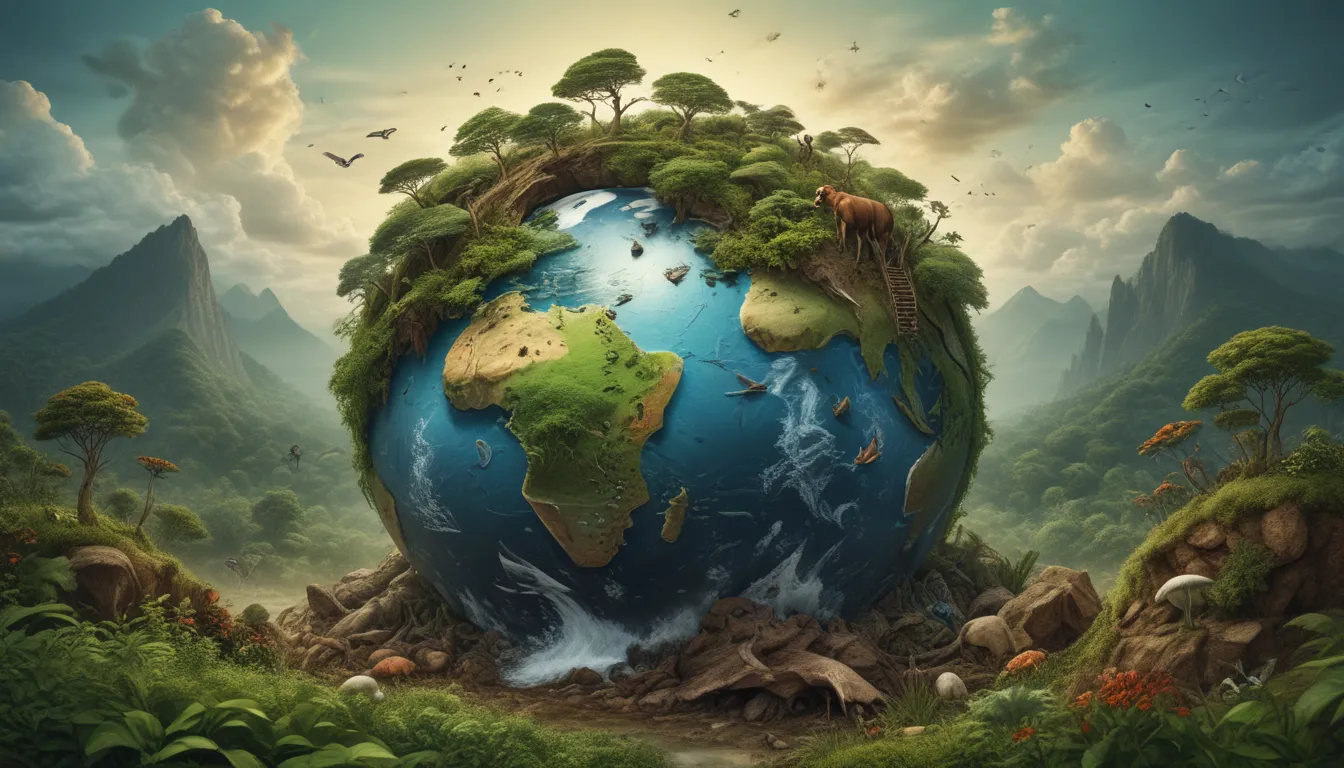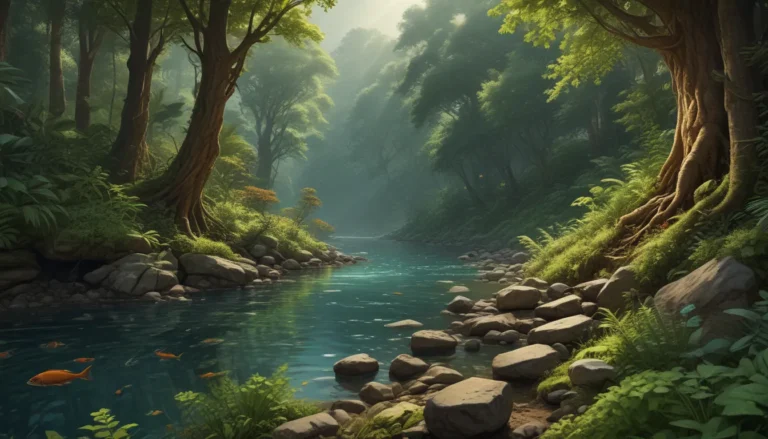A Note About Images: The images used in our articles are for illustration purposes only and may not exactly match the content. They are meant to engage readers, but the text should be relied upon for accurate information.
In today’s world, habitat destruction remains a critical environmental issue with far-reaching consequences for the planet and all living organisms. Whether it is the clearing of forests for agriculture or the development of urban landscapes encroaching upon natural habitats, the alarming rate at which ecosystems are being modified or destroyed has raised concerns among environmentalists, scientists, and policymakers.
Key Takeaways:
- Habitat destruction is causing species to disappear, disrupting the balance of nature, and threatening the survival of wildlife and indigenous communities.
- Approximately 30% of Earth’s land is currently affected by habitat destruction due to human activities such as agriculture, logging, and infrastructure development.
- Rainforests are disappearing at an alarming rate, with around 18 million acres lost each year, primarily due to activities like logging, mining, and agriculture.
- Coral reefs are highly vulnerable to habitat destruction due to overfishing, pollution, and coastal development.
- Fragmented habitats hinder animal migration patterns, while deforestation contributes to climate change by reducing the planet’s capacity to absorb carbon dioxide.
- Urbanization leads to habitat loss for wildlife, impacting indigenous communities and disrupting ecological balance.
Habitat Destruction: A Threat to Biodiversity
Habitat destruction is the primary cause of species extinction, with the destruction and fragmentation of habitats directly contributing to declining populations and pushing many species towards the brink of extinction. The loss of essential habitats disrupts the delicate balance of nature, impacting ecosystems and biodiversity.
Approximately 30% of Earth’s land has already been affected by habitat destruction, transforming vast areas of natural landscapes into altered environments due to human activities such as agriculture, logging, and infrastructure development. The relentless pace at which habitats are being destroyed poses a significant threat to the survival of numerous plant and animal species, leading to a loss of biodiversity on a global scale.
Rainforest Destruction: An Alarming Reality
The rapid disappearance of rainforests around the world is a cause for great concern. Each year, approximately 18 million acres of forests are lost, equivalent to 27 soccer fields every minute. Human activities such as logging, mining, and clearing land for agriculture are the primary drivers of rainforest destruction, leading to irreversible damage to these vital ecosystems.
The Amazon rainforest, often referred to as the “lungs of the Earth,” is facing unprecedented levels of deforestation, with vast areas being cleared for agricultural purposes. The destruction of the Amazon rainforest not only threatens the incredible biodiversity it harbors but also exacerbates climate change by reducing the planet’s capacity to absorb carbon dioxide.
Coral Reefs: Under Threat
Coral reefs, often referred to as the rainforests of the sea, are highly vulnerable to habitat destruction. Activities like overfishing, pollution, and coastal development are rapidly degrading coral reef habitats, endangering these diverse and fragile ecosystems. The loss of coral reefs not only threatens marine biodiversity but also impacts the livelihoods of communities dependent on these ecosystems for sustenance.
The Impact on Wildlife and Indigenous Communities
Habitat destruction poses a significant threat to wildlife by disrupting ecological balance, hindering animal migration patterns, and limiting the availability of food and resources. Fragmented habitats create barriers that restrict the movement of animals, leading to isolation and population decline. Moreover, urbanization and infrastructure development encroach upon natural habitats, leaving wildlife without adequate space to thrive.
Indigenous communities, in particular, rely on intact habitats for their livelihoods and cultural practices. The destruction of habitats not only threatens the way of life of these communities but also erodes traditional knowledge and practices that have been passed down through generations.
Conservation Efforts: A Path to Sustainability
Addressing habitat destruction requires urgent and collective action. Conservation efforts, such as creating protected areas, implementing sustainable land-use practices, promoting reforestation and habitat restoration, reducing pollution, and supporting education and awareness programs, are crucial steps towards mitigating the negative impacts of habitat destruction.
By preserving and restoring habitats, we can safeguard the incredible diversity of life on Earth, ensure the well-being of future generations, and work towards a more sustainable and harmonious relationship with our environment. Together, we can make a positive impact and contribute to the protection and conservation of Earth’s biodiversity.
Conclusion
In conclusion, habitat destruction remains a pressing environmental issue that threatens the delicate balance of ecosystems and the incredible diversity of life on our planet. The mind-blowing facts presented in this article highlight the severity of this problem and underscore the urgent need for conservation efforts to address habitat destruction.
By understanding the causes and consequences of habitat destruction, advocating for sustainable practices, and supporting conservation initiatives, we can work towards preserving and restoring habitats for the benefit of all species that call Earth their home. It is essential that we recognize the importance of protecting biodiversity and ecosystems, as these are fundamental to the health and well-being of our planet.
FAQs
- What is habitat destruction?
-
Habitat destruction refers to the degradation, alteration, or complete elimination of natural habitats such as forests, wetlands, or coral reefs, usually due to human activities like deforestation, urbanization, mining, or pollution.
-
What are the main causes of habitat destruction?
-
The main causes of habitat destruction include deforestation for agriculture or logging, urban expansion, industrial development, mining, pollution, and climate change, leading to the loss, fragmentation, or degradation of natural habitats.
-
What are the consequences of habitat destruction?
-
Habitat destruction has significant consequences, including loss of biodiversity, threats to species survival, ecosystem disruption, resource depletion, increased natural disaster risk, and contributions to climate change.
-
How does habitat destruction affect endangered species?
-
Habitat destruction is a significant threat to endangered species by depriving them of food, shelter, and breeding grounds, making survival increasingly difficult and further endangering their populations.
-
What can be done to address habitat destruction?
- Collective efforts are needed to address habitat destruction, including creating protected areas, implementing sustainable land-use practices, promoting reforestation, reducing pollution, supporting education and awareness, and advocating for responsible actions to safeguard biodiversity and ecosystems.
As we reflect on the critical importance of protecting and preserving Earth’s biodiversity, let us commit to taking action and making a positive difference in our environment. Together, we can work towards a sustainable future for all species and ensure the well-being of our planet for generations to come.






